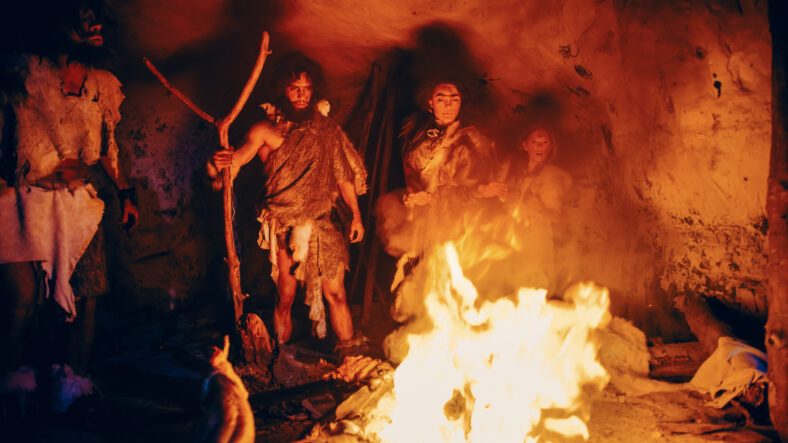Ice Age Humans Mastered The Use Of Fire Amid A Frigid Time On Earth

For ancient humans, learning to build fires was a life-changing. Fire could be used to cook their food, light up the night, stay warm in cold weather, and help them create tools.
This skill dates back at least a million years and would’ve been especially valuable during the Last Glacial Maximum (LGM), the coldest phase of the Ice Age in Europe.
But despite the era’s extreme cold, archaeologists have not been able to find clear evidence of fire usage during the LGM, which lasted from about 26,500 to 19,000 years ago.
In a new study, researchers sought to find out how Homo sapiens used fire during the LGM. The team analyzed the remains of three ancient fireplaces found at a site in Ukraine.
They used advanced techniques to reconstruct what the fireplaces looked like and what they burned to determine how early humans survived harsh climates.
These hearths revealed new details about fire usage in the late Upper Paleolithic, a time when fire appeared to be rare in the archaeological record.
“We know that fire was widespread before and after this period, but there is little evidence from the height of the Ice Age,” said William Murphree, a co-author of the study and a geoarchaeologist at the University of Algarve in Portugal.
Experts agree that fire was crucial for survival for Ice Age communities in the Upper Paleolithic. Daily activities would’ve been difficult or impossible to carry out without it.
“Fire was not just about keeping warm; it was essential for cooking, making tools, and for social gatherings,” said Philip Nigst, a study co-author and an archaeologist at the University of Vienna in Austria.

Sign up for Chip Chick’s newsletter and get stories like this delivered to your inbox.
The LGM caused Europe to deteriorate quickly. It brought on cold, dry conditions that led to habitat loss and geographic isolation.
The cold may have stunted the growth of trees in steppes and grasslands and limited the availability of firewood, which could explain why less fires seemed to have been built.
Or, people could’ve built more fires than ever, but the LGM destroyed most of the evidence. When the researchers investigated the three hearths, they discovered that people had mostly burned wood in them. The fires reached temperatures over 600 degrees Celsius, or 1,112 degrees Fahrenheit.
This indicates a controlled, sophisticated use of fire, especially in a landscape where resources may have been limited.
According to some charcoal fragments, the primary fuel source was spruce wood. The hearths also contained traces of animal bones, but it’s unclear why they were there.
Possibly, people burned bones or animal fat intentionally or as a byproduct of cooking. Currently, the researchers are looking into whether the animal bones were used as fuel or just accidentally burned.
If Ice Age humans really were using bones and fat as alternative sources of fuel, it would point to a high level of adaptability.
More research is also needed to determine why so few hearths have been found. The new study was published in Geoarchaeology.
More About:News





